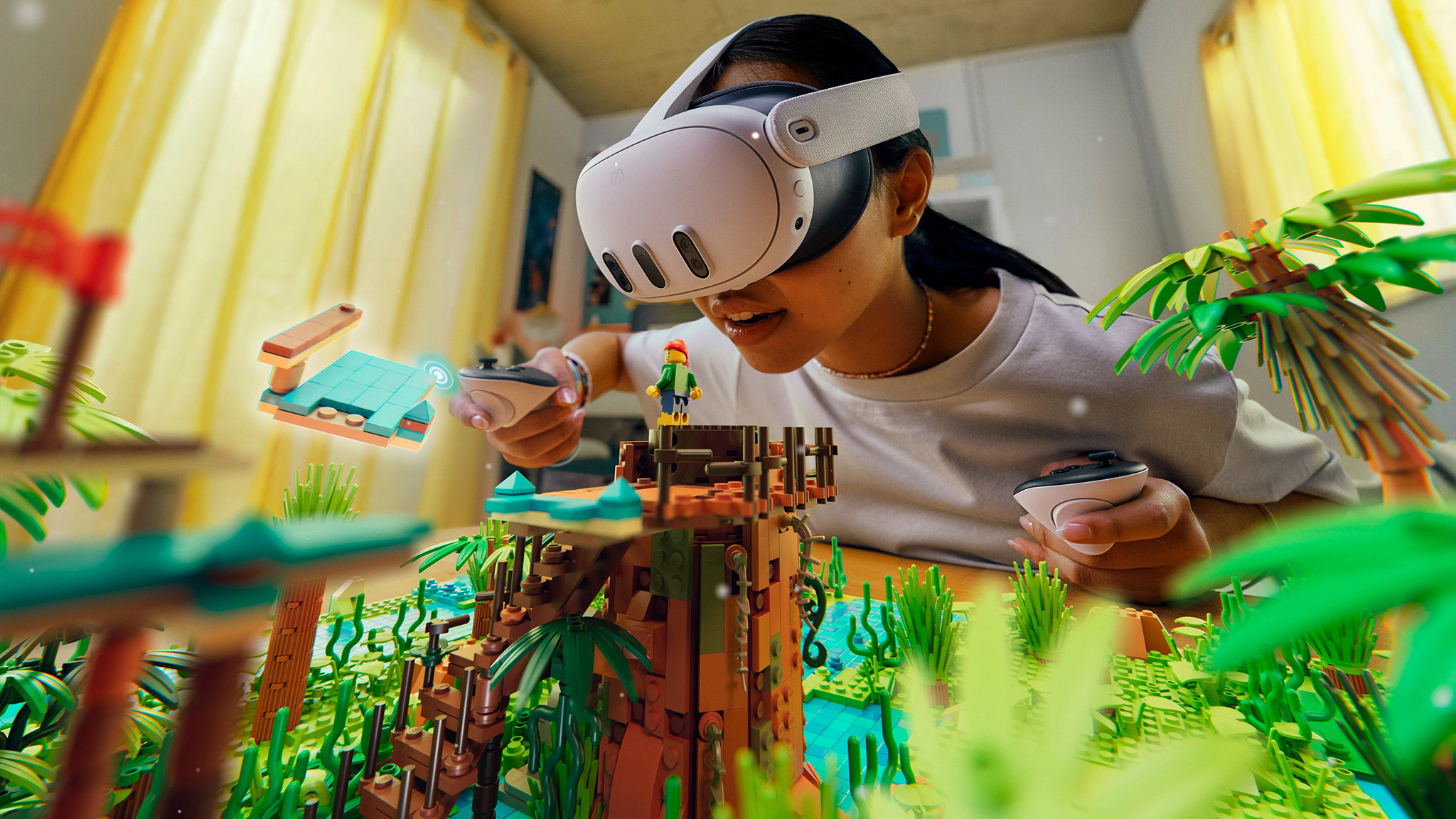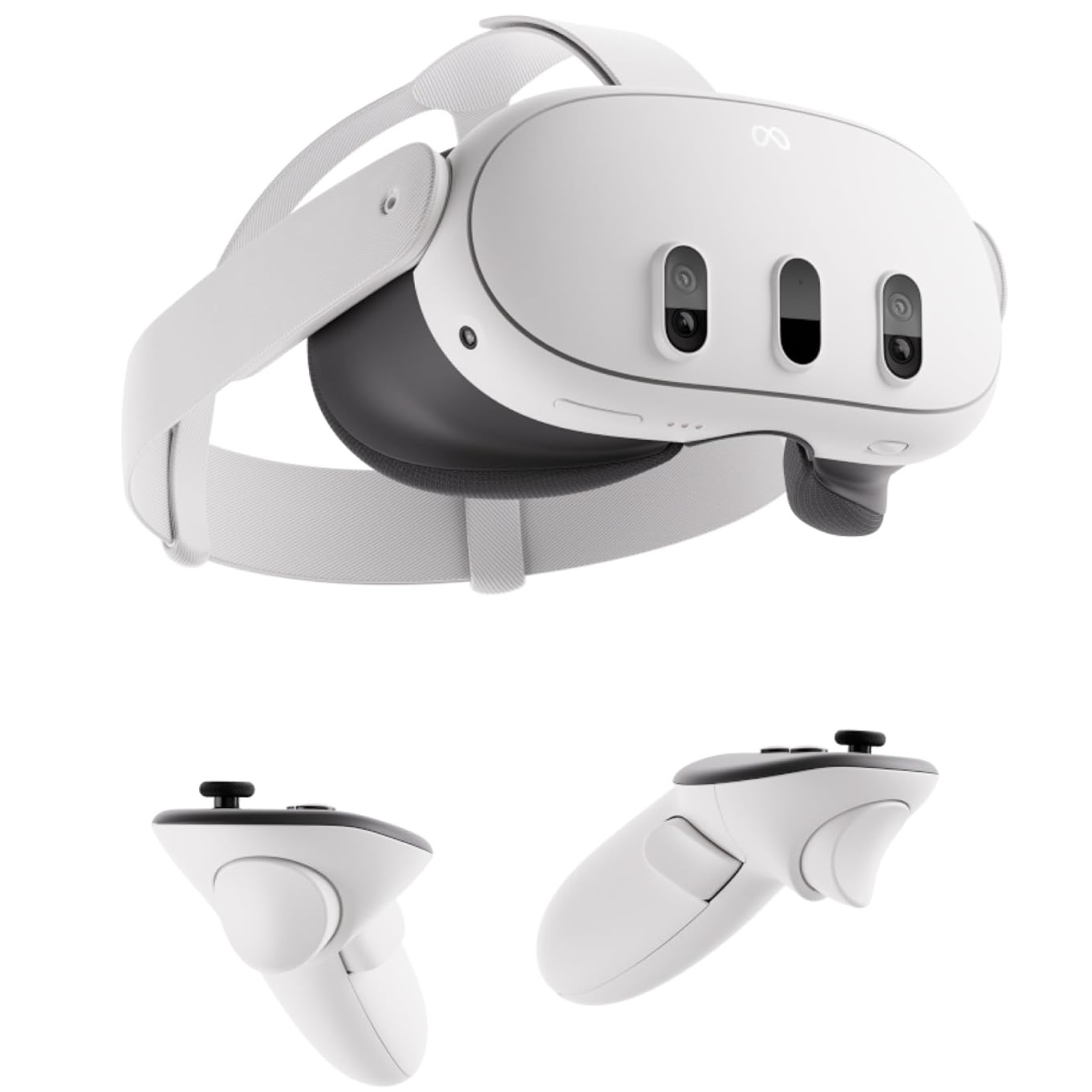The Quest 3’s mixed reality isn’t just the gimmick you think it is
The Quest 3’s newest feature has the potential to be its best.

It’s been a long time coming, but it looks like we're starting to see consumer VR truly thrive. There are so many different options available on the market now beyond just Meta and Sony. But where do we go from here? As VR continues to advance, mixing it with the real world is a logical next step in creating new and exciting virtual experiences. Enter the Meta Quest 3.
The most obvious reason people will invest in this headset is that it delivers more powerful graphical experiences than ever while still not needing wires or another device. Not everyone has the means for a VR-ready PC or a PS5, and the leap in processing power between the Quest 2 and Quest 3 is huge. Quest 3 games look downright stunning, even if they can’t fully compare to a headset like the wired PSVR 2.
Beyond the graphical upgrade, though, what really impresses me about the Quest 3 is the mixed reality capabilities it offers. As Android Central’s Nick Sutrich explains in his review, the Quest 3 isn’t only a virtual reality headset but instead a mixed reality headset by design.
Now, some might not feel there’s any value (or even a point) in the idea behind mixed reality. After all, you buy a VR headset to escape into a virtual world, not see virtual objects in the real world. I think this is a very valid stance to take! Mixed reality isn’t going to be for everyone, just like virtual reality isn’t for everyone.
But I think a lot of this negativity for MR stems from the fact that mixed reality conjures memories of novel one-off experiences rather than anything substantial.
Aside from the cultural juggernaut that is Pokémon GO, no AR or MR game has ever truly taken off. It’s seen as little more than a novelty — a let’s-pass-the-time party trick to show unimpressed friends and family who feign a passing interest in how some little virtual guy is magically on the coffee table if you look through your phone screen. And, despite how much I think it’s capable of being more than that, it’s going to take a while to get there.
The biggest problem facing the Quest 3’s mixed reality capabilities right now is the lack of a true killer app for its tech.
The biggest problem facing the Quest 3’s mixed reality capabilities right now is the lack of a true killer app for its tech. Frankly, it’s a baffling decision on Meta’s end to tout the tech so prominently when promoting the headset yet fail to include a game at launch that has any real “wow factor.”
Get the latest news from Android Central, your trusted companion in the world of Android
Consider that when PSVR 2 hit shelves earlier this year, there were already games to show off its foveated rendering and eye-tracking features right from the jump. Horizon: Call of the Mountain and Resident Evil Village both provided great, high-budget experiences for players to immerse themselves in while simultaneously seeing the headset’s new features in action.
By contrast, there’s no must-have exclusive launching with the Quest 3, let alone ones that focus on mixed reality. Launch window releases like Ghostbusters: Rise of the Ghost Lord and LEGO Brick Tales will include MR capabilities, but nothing we’ve seen indicates that this will help elevate gameplay. Instead, these implementations of mixed reality seem very gimmicky, which is a problem I suspect the Quest 3 library is going to struggle with for a long time. This is especially true since, right now, most of the best games on the Quest 3 are also on the Quest 2.
But just imagine the possibilities if MR is taken advantage of to its full potential! VR as a whole has taken such huge leaps and bounds from when consumer headsets first became available. I couldn’t even imagine the level of interactivity in VR games that’s offered nowadays back when the Oculus Rift was first released.

So sure, right now, we might be stuck simply using the Quest 3 to blast the Stay Puft Marshmallow Man in our living room or to make sure you don't punch a wall during VR fitness games. But where are we going to be in a few years when we’re well on to another generation of VR headsets?
To clarify, I don’t think mixed reality is ever going to offer experiences that supplant virtual reality experiences. Not every piece of tech and hardware needs to be blazing a path forward for the rest of the industry to follow. Still, none of that invalidates that mixed reality has much more potential than our expectations would suggest.
Imagine being able to download a museum app in which an MR-compatible exhibit brings famous art to life without having to travel to Paris or New York to see it. You could even see an artist talk about their work next to that painting.
Mixed reality has practical implications, like teaching you to play an instrument, something we've already seen with the Pianovision app. Another possibility is the option to project an overlay from your headset onto an easel and learn how to paint.
And while we already have games like Dungeons of Eternity and Demeo that offer a D&D-esque experience, there are a ton of licensed tabletop games that could get the MR treatment. Imagine if Wizards of the Coast actually made the real thing available, with a Roll20 port for Quest 3 users to start a D&D campaign with friends across the country?
Ultimately, I think the mixed reality tech in the Quest 3 can open up a world of possibilities. We’ve never really had consumer hardware before that offers a clear and detailed level of visual fidelity for MR experiences that the Quest 3 does. Is it a gimmick? Right now, sure. But it has the potential to be so much more if devs — and Meta itself — foster it.

Nick is a freelance journalist and games reviewer with a passion for RPGs, bad puns, and VR. When he isn’t guesting on podcasts or streaming on Twitch, he’s probably playing Borderlands with his husband.



